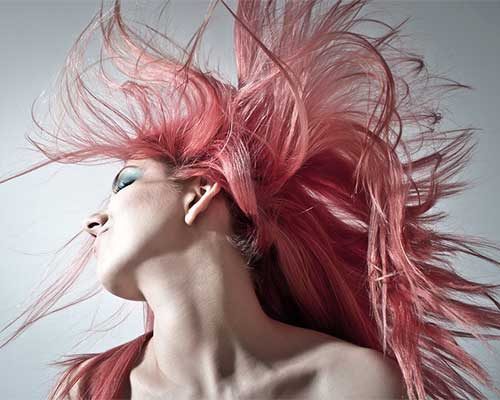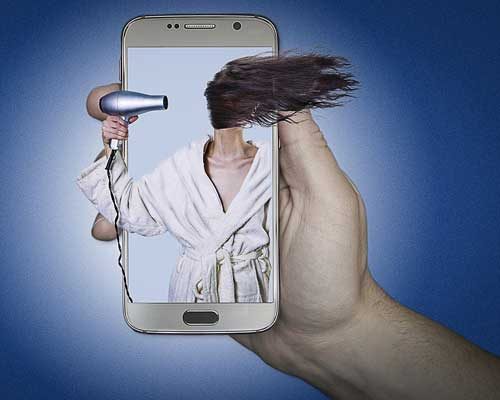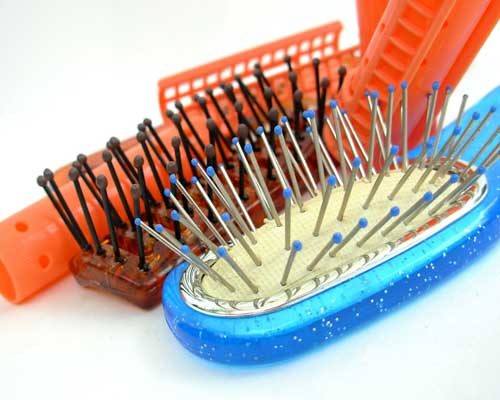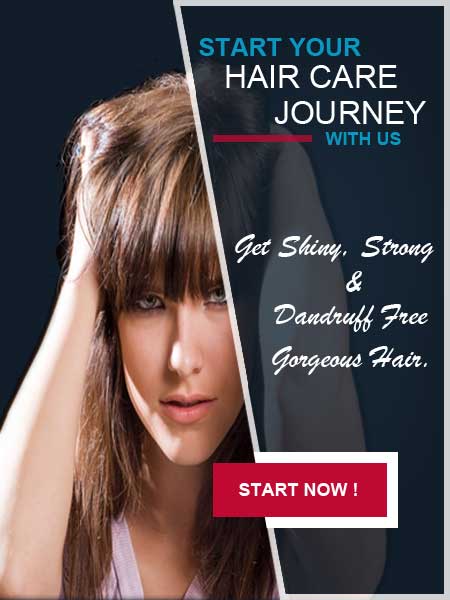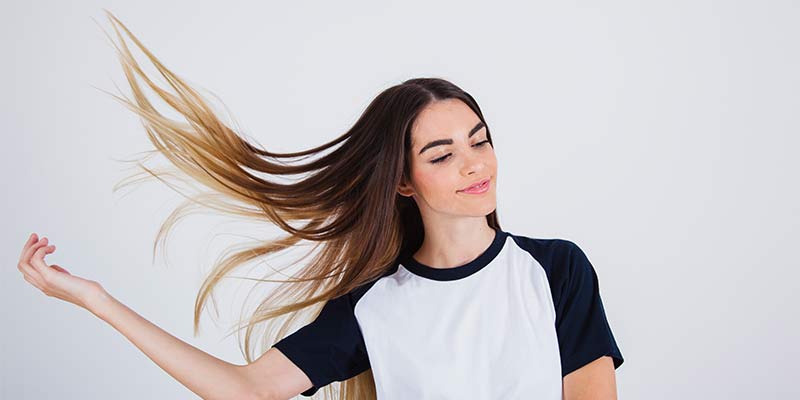
Welcome to a fascinating journey into the microscopic world of hair strands. In this article, we will delve into the intricate details and hidden wonders that make up this seemingly simple part of our bodies. From its composition to its growth cycle, we will uncover the secrets that lie beneath those locks. At its core, a strand of hair is composed of a protein called keratin, which also forms the outer layer of our skin and nails. However, the unique structure of hair gives it its distinct characteristics, such as strength, flexibility, and insulation. Understanding the anatomy of a hair strand can provide insights into various aspects of our health and lifestyle. We will explore the different layers of a hair strand – the cuticle, cortex, and medulla – and how each layer contributes to its overall appearance and feel. Along the way, we will discuss common hair problems and gain insights into how to maintain healthy and vibrant hair. So, get ready to unlock the mysteries of your strands and discover the wonders that lie within each individual hair shaft. Join us on this fascinating journey into the captivating world of hair anatomy.
You are using so many hair care products but nothing suit with your hair or hair strand. That’s why you are concerned, isn’t it? Let’s check out what is a strand of hair? .
Okay, now let me answer the following questions.
- You know enough about your hair type and hair strand?
- Do you have any idea about your hair structure?
- What do you know how hair care products are made?
If you know the answer to these questions, then I’m sure that you are very much conscious of your hair and its care. But if you don’t know the answer, then this post is definitely for you.
Actually, if you don’t have full ideas about the hair strand, hair structure, and hair type then you will have to face some challenges while caring and choosing the right hair care products for your hair. To understand your hair structure and hair type properly, first you need to know about the hair strand.
Generally, the topic hair strand seems to very difficult for many of us. But the topic is not very difficult what we usually think. It’s so simple. So let’s know detail about the strand of hair.
Definition of a strand:
One thing I want to remember you before detailing about a hair strand, if you know the meaning of the word ‘Strand’, then it will not be difficult for you to understand about the hair strand.
Simply, you can imagine a strand with a single hair, a noodle, and even a thought line. But in short, a strand is something with a long and a thin length.
That means the strand describes the length of an object, which is long and thin and looks like a hair, a thread and an Italian food like spaghetti.
What is a strand of hair?
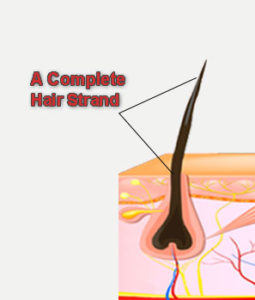 Hair, an integral part of human appearance and identity, is more than just a visual feature. Each strand of hair is a complex structure composed of multiple layers, each serving a unique function. Understanding the anatomy of a hair strand can provide valuable insights into maintaining hair health and addressing common hair issues. This article will delve into the intricate details of a hair strand, exploring its three primary layers, the roles these layers play, factors affecting hair health and growth, common hair problems, and tips for maintaining healthy hair.
Hair, an integral part of human appearance and identity, is more than just a visual feature. Each strand of hair is a complex structure composed of multiple layers, each serving a unique function. Understanding the anatomy of a hair strand can provide valuable insights into maintaining hair health and addressing common hair issues. This article will delve into the intricate details of a hair strand, exploring its three primary layers, the roles these layers play, factors affecting hair health and growth, common hair problems, and tips for maintaining healthy hair.
Already you have got a little bit idea of the hair strand from the above.
But if I describe it according to the language of zoology, then I would like to say that the hair strand is something like a thread. Naturally, it sprouts from a hair follicle and deeply embeds in the dermis.
Note:
- The dermis is one kind of protective inner layer of our skin and deeply associated with another layer such as epidermis.
- The hair follicle is a point where our hair grows.
Finally, it’s clear to you that a strand of hair is the length of a complete hair. So simply we can say, a single strand of hair is the complete length of our hair.
The Three Layers of a Hair Strand
A single strand of hair consists of three main layers: the cuticle, the cortex, and the medulla. Each layer has distinct characteristics and functions that contribute to the overall health and appearance of hair.
- The Cuticle: This is the outermost layer of the hair strand, composed of overlapping cells that resemble the scales of a fish or shingles on a roof. The cuticle serves as the hair’s primary defense against environmental damage.
- The Cortex: Situated beneath the cuticle, the cortex makes up the majority of the hair’s structure. It contains long keratin fibers and is responsible for the hair’s strength, color, and texture.
- The Medulla: The innermost layer, present primarily in thicker hair types, is less understood but believed to contribute to the overall strength and diameter of the hair strand.
Construction of a strand of hair:
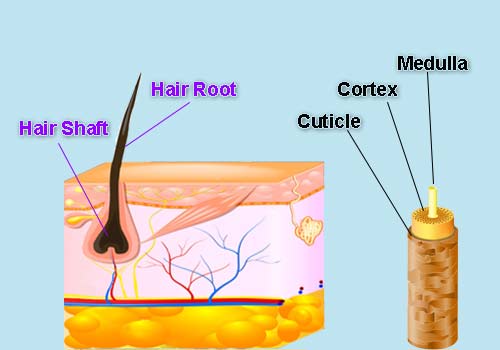 In this section, we will know about the construction of the hair strand. Generally, every single strand of hair consists of with two main components such as a hair root and a hair shaft.
In this section, we will know about the construction of the hair strand. Generally, every single strand of hair consists of with two main components such as a hair root and a hair shaft.
Hair root: Hair root is positioned below the skin of our scalp that means within the layer of our skin like dermis and epidermis. It’s the main basement of a single strand of hair and help in our hair growth. Basically, a tube-like structure hair follicle, contains the hair root (though it embeds in the hair follicle).
Hair shaft: Actually what we have seen above our scalp is the hair shaft and it’s one of the most important parts of a single strand of hair. It’s made up of three components such as cuticle, cortex, and medulla.
Cuticle: It’s a kind of thinner protective exterior of a hair shaft. It contains the nutritious element for the hair strand and also helps in our hair growth. The main role of it is to give an extra protection of our hair’s internal layers. It is also known as a style layer because it determines our hair’s style and sheen. So without a healthy cuticle layer, you can’t expect long, silky and beautiful healthy hair strands.
Cortex: Cortex is the most important part of a strand of hair and also a middle layer, which contains a long keratin chain and cells to add elasticity in our hair and make our hair more protective and flexible. That is why it’s considered the basement of our hair’s color, structure, strength, and stability.
Medulla: Medulla is the most inner layer of the hair strand. Basically, it contains round type cells. The presence and existence of a medulla is different in person to person and it also depends on the type of our hair. That means in our scalp some of the hair can either contain a complete medulla or some can contain a fragmented medulla. Also, the possibility is some can’t either contain any type of medulla or some can contain both complete and fragmented medulla in the same scalp.
In the end, I hope this post will make you more concise about the hair strand. So you will easily understand your hair structure and also you will able to determine your hair types. Besides, it will reveal you about the cause and facts of your hair problem.
So you will not face any kind of challenges while choosing the right products for your hair. So in the 21st century, it’s very easy to care for your hair and style it whatever you want.
The Role of the Cuticle in Hair Health
The cuticle is the protective shield of the hair strand. Its primary function is to guard the inner layers from environmental damage, such as UV radiation, pollution, and chemical exposure. A healthy cuticle lies flat, creating a smooth surface that reflects light, which results in shiny, smooth hair. When the cuticle is damaged, it can lift and create a rough surface, leading to dullness, frizz, and increased susceptibility to further damage.
Key Functions of the Cuticle:
- Protection: Shields the inner layers from external aggressors.
- Moisture Retention: Helps to lock in moisture, preventing dryness.
- Smoothness and Shine: A smooth cuticle surface reflects light, making hair appear shiny and healthy.
Maintaining a healthy cuticle is crucial for overall hair health. Regular conditioning, gentle handling, and minimizing exposure to harsh chemicals and heat can help preserve the integrity of the cuticle.
Understanding the Cortex and Its Importance
The cortex is the powerhouse of the hair strand, responsible for its strength, elasticity, and color. This layer consists of long chains of keratin proteins intertwined to form strong fibers. The cortex also contains melanin, the pigment that gives hair its color. There are two types of melanin: eumelanin (which provides brown to black hues) and pheomelanin (which provides yellow to red hues). The combination and concentration of these melanins determine an individual’s hair color.
Key Functions of the Cortex:
- Strength and Elasticity: Keratin fibers in the cortex provide structural support and elasticity.
- Hair Color: Melanin pigments in the cortex determine hair color.
- Texture: The arrangement and condition of keratin fibers influence hair texture, whether it is straight, wavy, or curly.
Damage to the cortex can weaken the hair, making it more prone to breakage and loss of color. Protecting the cortex through proper hair care practices and avoiding excessive chemical treatments is essential for maintaining strong, vibrant hair.
The Medulla: Its Function and Significance
The medulla is the innermost layer of the hair strand, typically found in thicker hair types. It consists of a soft, spongy core that may contain air spaces. The presence and significance of the medulla vary among different hair types and individuals.
Key Functions of the Medulla:
- Structural Support: The medulla may contribute to the overall strength and diameter of the hair strand.
- Insulation: The air spaces within the medulla can provide insulation, helping to regulate temperature.
Although the medulla’s exact role is not as well-defined as the cuticle and cortex, it is believed to play a part in the hair’s structural integrity and thickness. The medulla’s presence or absence does not significantly impact hair health but may influence the overall texture and feel of the hair.
Factors That Affect Hair Health and Growth
Numerous factors influence hair health and growth, ranging from genetics to lifestyle choices. Understanding these factors can help in developing effective hair care routines and addressing specific hair concerns.
Genetic Factors:
- Hair Type and Texture: Genetics largely determine hair type (straight, wavy, curly) and texture (fine, medium, coarse).
- Hair Growth Cycle: The duration of the hair growth cycle (anagen, catagen, telogen phases) is influenced by genetics.
Lifestyle and Environmental Factors:
- Diet and Nutrition: A balanced diet rich in vitamins and minerals, such as biotin, vitamin E, and omega-3 fatty acids, supports healthy hair growth.
- Stress Levels: Chronic stress can disrupt the hair growth cycle, leading to hair loss.
- Hair Care Practices: Gentle handling, regular conditioning, and avoiding excessive heat and chemical treatments help maintain hair health.
- Environmental Exposure: UV radiation, pollution, and harsh weather conditions can damage the hair cuticle and cortex.
Hormonal Factors:
- Hormonal Imbalances: Conditions such as thyroid disorders, polycystic ovary syndrome (PCOS), and menopause can affect hair health and growth.
- Pregnancy and Postpartum: Hormonal changes during pregnancy and after childbirth can lead to temporary hair loss or changes in hair texture.
Common Hair Problems and Their Causes
Several common hair problems can arise due to various internal and external factors. Understanding the causes of these issues is the first step toward finding effective solutions.
Hair Loss (Alopecia):
- Genetic Predisposition: Androgenetic alopecia, or pattern baldness, is a hereditary condition affecting both men and women.
- Nutritional Deficiencies: Lack of essential nutrients like iron, zinc, and biotin can lead to hair thinning and loss.
- Medical Conditions: Autoimmune diseases, thyroid disorders, and scalp infections can cause hair loss.
Dandruff and Scalp Issues:
- Seborrheic Dermatitis: An overgrowth of yeast on the scalp can lead to dandruff and inflammation.
- Dry Scalp: Insufficient moisture can cause dryness, flaking, and itchiness.
- Product Build-Up: Excessive use of styling products can clog hair follicles and irritate the scalp.
Dry and Brittle Hair:
- Environmental Damage: Sun exposure, wind, and pollution can strip the hair of its natural moisture.
- Overuse of Heat Tools: Frequent use of blow dryers, flat irons, and curling irons can weaken the hair cuticle.
- Chemical Treatments: Coloring, perming, and relaxing can damage the hair’s structure.
Split Ends and Breakage:
- Mechanical Damage: Rough brushing and styling can cause the hair shaft to split.
- Lack of Moisture: Dry hair is more prone to splitting and breaking.
Haircare Tips for Maintaining Healthy Strands
Maintaining healthy hair requires a combination of proper hair care practices and a holistic approach to overall health. Here are some tips to help you keep your hair in optimal condition:
- Gentle Washing: Use a mild shampoo and lukewarm water to cleanse your hair without stripping it of natural oils. Avoid over-washing, which can lead to dryness.
- Condition Regularly: Apply a conditioner after every shampoo to replenish moisture and protect the hair cuticle. Focus on the mid-lengths and ends, where hair is most prone to dryness.
- Limit Heat Styling: Reduce the use of heat styling tools and always use a heat protectant spray when blow-drying, curling, or straightening your hair.
- Protect from Environmental Damage: Wear a hat or use a UV-protectant spray to shield your hair from sun damage. Rinse your hair after swimming to remove chlorine or saltwater.
- Use a Wide-Tooth Comb: Detangle your hair gently with a wide-tooth comb, starting from the ends and working your way up to avoid breakage.
- Regular Trims: Get regular haircuts to remove split ends and keep your hair looking healthy and neat.
- Balanced Diet: Eat a nutritious diet rich in vitamins and minerals that support hair health, such as biotin, vitamin E, iron, and omega-3 fatty acids.
- Stay Hydrated: Drink plenty of water to keep your hair and scalp hydrated.
- Avoid Tight Hairstyles: Styles that pull on the hair, like tight ponytails or braids, can cause breakage and hair loss.
- Minimize Chemical Treatments: Limit the use of harsh chemical treatments like bleaching, perming, and relaxing. If you do use them, follow up with intensive conditioning treatments.
Haircare Products and Ingredients to Look Out For
Choosing the right haircare products is essential for maintaining healthy hair. Here are some key ingredients and products to look out for:
Shampoos and Conditioners:
- Sulfate-Free Shampoos: Sulfates can be harsh and drying. Opt for sulfate-free formulas that cleanse without stripping natural oils.
- Moisturizing Conditioners: Look for conditioners with ingredients like shea butter, argan oil, and glycerin to hydrate and nourish the hair.
Leave-In Treatments:
- Leave-In Conditioners: These provide extra moisture and protection throughout the day.
- Hair Oils: Natural oils like coconut oil, argan oil, and jojoba oil can help seal in moisture and add shine.
Hair Masks and Deep Conditioners:
- Protein Treatments: Strengthen and repair the hair shaft with keratin or silk proteins.
- Hydrating Masks: Use once a week to replenish moisture and improve elasticity.
Styling Products:
- Heat Protectants: Essential for minimizing damage from heat styling tools.
- Anti-Frizz Serums: Help to smooth the hair cuticle and reduce frizz.
Conclusion: Embracing the Wonders of Hair Anatomy
Understanding the intricate structure of a hair strand and the factors that influence its health can empower you to make informed decisions about your haircare routine. Each layer of the hair strand—the cuticle, cortex, and medulla—plays a vital role in determining the hair’s overall health, strength, and appearance. By adopting healthy haircare practices, choosing the right products, and addressing common hair problems with targeted solutions, you can maintain beautiful, resilient hair.
Embrace the wonders of hair anatomy and take a proactive approach to hair care. Whether you are dealing with hair loss, dryness, or simply looking to enhance your hair’s natural beauty, knowledge is your most powerful tool. Celebrate your hair, take care of it with love and attention, and enjoy the confidence that comes with healthy, vibrant strands.

